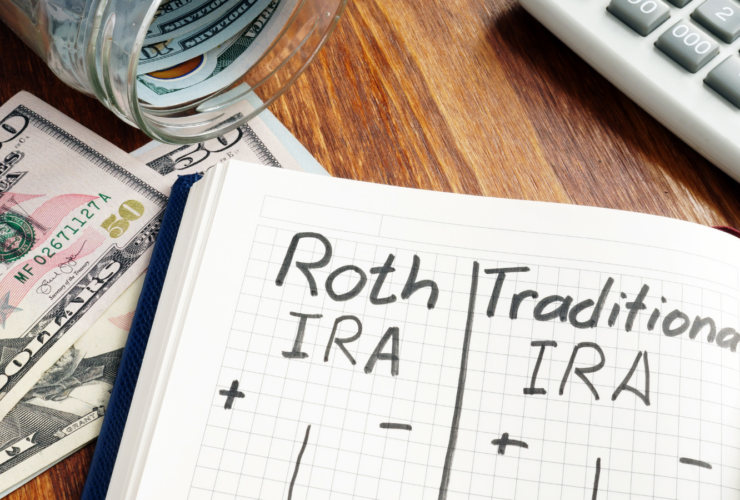Budgeting 101: Create a Personalized Budget for Financial Success
Budgeting isn’t everyone’s favorite topic, but it’s certainly an important one. Without a budget, you don’t know what you spend and how much money you actually have!
If you want to create a budget to help you reach your financial and personal goals, let’s start with the basics: what is a budget, how to budget your money, and 6 steps to get you started.
What is a budget, and why is it important to have one?
Simply put, a budget is having a plan for every dollar you earn. It can serve as a guide for your financial decisions; how you’ll spend your money and how you will save it.
It’s a simple concept, but it can be difficult to execute. Why? Because saving your money isn’t as fun as spending it (well, on the surface).
Contrary to popular belief, budgeting is not meant to restrict you. It’s not a list of things you can’t do, it’s actually an enabler for the things you really want to do! Do you want to take a grand European vacation or buy your first home? Budgeting allows you to reach those goals. So you may be spending less on frivolous items, but you’re investing in your future.
By closely monitoring your monthly expenses, achieving your financial goals will be much more attainable!
How to budget your money
There are several different ways you can budget your money. Some of the most popular techniques are the zero-based and pay-yourself-first budgets, but we tend to gravitate toward the 50/30/20 rule.
The 50/30/20 rule is a popular budgeting tool that can help you manage your money more effectively. It works by splitting your money into 3 categories of spending: 50% on needs, 30% on wants, and 20% on savings.
- Needs: This includes rent, utilities, groceries, healthcare, and insurance. Your Netflix subscription may seem like a necessity, but it’s something you could live without if you had to.
- Wants: This is where your Netflix and miscellaneous subscriptions fit. Wants are anything non-essential, like coffee runs, dining out, and subscriptions.
- Savings: Building a healthy amount of savings can be a great way to create an emergency fund or pay off high-interest debt. A great way to store your savings is in a high-yield savings account where the APY can reach up to 5%; compare that to big banks that offer only .01%.
Budgeting is an extremely personal process, so what might work for you may not work for others, and that’s okay! Finding the right strategy for you may take a couple of different tries, so be patient and stay open-minded to new ideas.
As you discover the right budgeting strategy for you, start going through these 6 steps to get the ball rolling.
6 steps to creating a budget that fits your needs
1. Calculate your total monthly income
The foundation of your budget is your total after-tax monthly income. Without this number, it’s all just a guessing game! Total monthly income includes but is not limited to, investment earnings, government payments, hourly/salaried earnings, and any side hustles you may have. If you’re unsure, look at your paystubs and bank statements to get a clear number.
2. Gather all of your monthly expenses
The next step is to round up all of your monthly expenses and categorize them as needed. This includes mortgage or rent, medical and insurance, debt payments, pet expenses, groceries, meals, and childcare costs, just to name a few. Organize each expense into its respective category; food, housing, etc.
If you can, track your monthly spending over the course of 6-12 months to get a better idea of where your money is going.
3. Lay out your financial goals
This is one of the most exciting steps of the process! Think about all of the big goals you want to achieve in your life. This could include:
- Buying a home
- Retiring early
- Traveling
- Buying a new car
- Starting a business
- Paying off debt
- Setting up a college fund for your child
Set realistic goals, but don’t put yourself in a box. You may be surprised at how much you can achieve with a budget in place!
4. Create space for an emergency fund
An emergency fund is a critical part of every financial plan. You don’t know what the future brings, so it’s important to be prepared for every possible scenario, whether job loss or a medical emergency. We recommend having 3-6 months of total living expenses put towards an emergency fund. And luckily, you already have your total expenses handy!
5. Make a plan
You know your goals; now, you have to make a plan to achieve them! As we mentioned above, the 50/30/20 budget method is an excellent way to get started on your budgeting journey, but there are many options that can fit your needs.
6. Review your budget monthly and make adjustments as needed
Your budget isn’t a one-and-done type of deal! It needs to be reviewed regularly, especially after major life events such as getting married or receiving a job promotion. Don’t be afraid to make changes or adjustments as needed. Your budget is a living document, not something that’s set in stone.
A stronger investment strategy with Hedgehog
Hedgehog Investments should be your first stop when there’s room in your financial strategy to explore alternative investments. Diversify your portfolio and enjoy higher returns with our unique investment model.
Get in touch with our team to learn more.
Disclaimer:
This material is intended for informational purposes only and should not be construed as legal or tax advice. Information here is not intended to replace the advice of your investment advisor or financial advisor. This information is not an offer or a solicitation to buy or sell securities. This information may have been compiled from third-party sources and is believed to be reliable. All investing involves risk, including the loss of principal.




